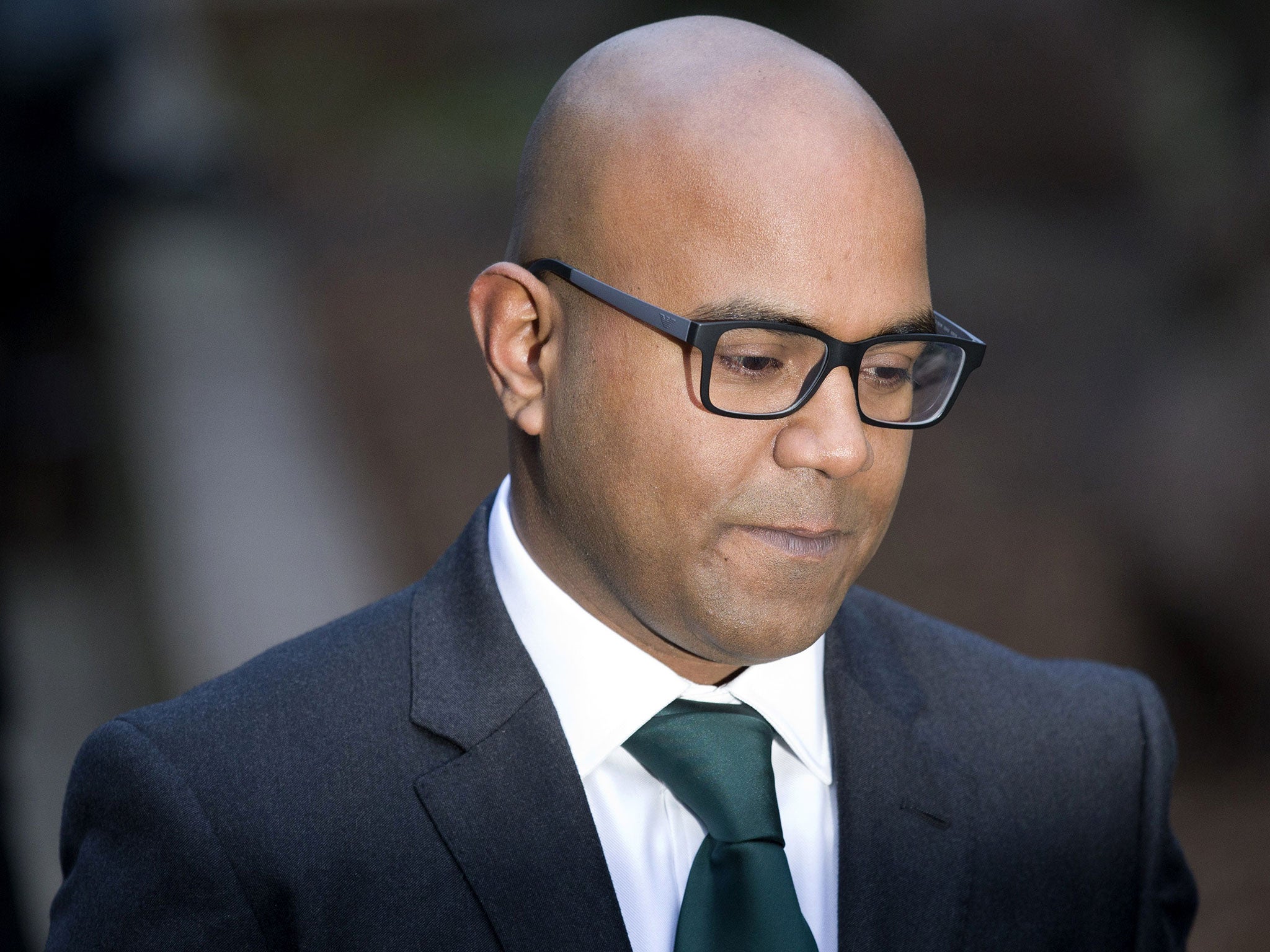Female genital mutilation: NHS doctor becomes first person to stand trial for involvement in the illegal practice
'At no point in time did I want to cause any harm to the patient' says Dr Dhanuson Dharmasena

An NHS hospital doctor became the first person to stand trial for female genital mutilation after being accused of illegally stitching up a young woman who had just given birth to her first child.
Dr Dhanuson Dharmasena, 32, a registrar at the Whittington hospital in north London, allegedly carried out a similar procedure to one first performed on the woman when she was aged six in Somalia.
The doctor, who delivered the woman’s baby, said that he came under pressure from Hasan Mohamed, 41, which led him to insert a single-running stitch about 1.5cm long that had the same effect as when she was circumcised as a child, Southwark Crown Court was told.
“If you do know a little about FGM, you may be expecting to hear that the offence took place in a back street clinic by an unqualified and uncaring person, on a young child,” said Kate Bex, counsel for the prosecution. “This trial is quite different but nonetheless involves FGM.”
The court was told that the woman, now aged 27 and who cannot be named for legal reasons, had undergone FGM as a child which included sewing part of her labia together which meant that she could not give birth.
Before the birth of her first child, Dr Dhamasena cut part of the fused labia and then re-stitched it after the operation, in an act that went against hospital policy, the court heard.
The midwife working with Dr Dharmasena told him that what he had done was “illegal” and spoke privately with him so he could write in the medical notes what had happened, the prosecution said.
Dr Dharmasena, who had only been in his post at the Whittington for a month, then spoke with a senior consultant who told him that it would be “painful and humiliating” for the woman to have the stitches removed, the court heard. In his notes, he wrote: “In hindsight should not have closed stitches. Decision made not re-open sutures.”
“It is that stitching back together by Dr Dharmasena, and Mr Mohamed’s insistence or encouragement, which the prosecution says is an offence under the [Female Genital Mutilation] Act,” Ms Bex told the jury. “That policy is written and available to all midwives, nurses, obstetricians and students at the Whittington and Dr Dharmasena is expected to be aware of it.”
Dr Dharmasena’s work prompted a hospital inquiry. In a statement, he said that he did it because he thought that was what the mother wanted. “At no point in time did I intentionally or deliberately want to cause any harm to the patient. I had obeyed all of the patient’s wishes,” he said.
On the first day of his trial, the prosecution claimed that Dr Dharmasena changed his story when it became a police inquiry and he told officers that the procedure was medically justified.
The court heard that hospital policy had been breached previously. The mother first underwent surgery in 2011 because her childhood FGM meant she could not have sexual intercourse.
The following year, she turned up at the Whittington nine weeks pregnant for her first ante-natal appointment. A midwife learnt she had undergone FGM but failed to tell a specialist, contrary to hospital policy.
Dr Dharmasena denies one charge of FGM. Mr Mohamed denies the same charge by aiding and abetting.
The trial continues.
